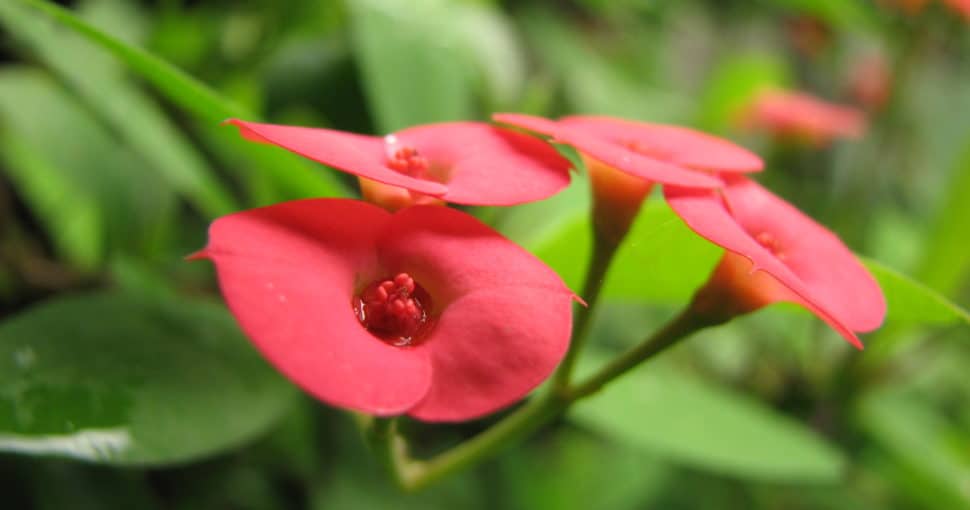You may find many dangerous plants in Louisiana that tend to poison both animals and people. If you are a resident of Louisiana, you should be aware of the presence of these lethal plants. This way, you will be able to tell what you can and cannot eat from the wild.
Contents
- 1. Daffodil (Narcissus)
- 2. Oleander (Nerium Oleander)
- 3. Poison Oak (Toxicodendron Diversilobum)
- 4. Poison Ivy (Toxicodendron Radicans)
- 5. Poison Sumac (Toxicodendron Vernix)
- 6. Belladonna Lily (Amaryllis belladonna)
- 7. Azaleas (Rhododendron)
- 8. Elephant’s Ear (Alocasia calidora)
- 9. Irises (Iris)
- 10. Lantana (Lantana Camara)
- 11. Milkweed (Asclepias)
- 12. Wisteria (Wisteria)
- 13. Angel’s Trumpet (Brugmansia)
- 14. Sago Palm (Cycas Revoluta)
- 15. Japanese Yew (Taxus Cuspidata)
- 16. Yellow Jessamine (Gelsemium Sempervirens)
- 17. Eastern Black Nightshade (Solanum Ptycanthum)
- 18. Alfalfa (Medicago Sativa)
- 19. Bloodroot (Sanguinaria Canadensis)
- 20. Bouncing Bet/Wild Sweet William (Saponaria Officinalis)
- 21. Bracken Fern (Pteridium Esculentum)
- 22. Buttercup (Ranunculus)
- 23. Crown of Thorns (Euphorbia Milii)
- 24. Dutchman’s Breeches (Dicentra Cucullaria)
You may also educate others so that they don’t put themselves or their pets in danger. Remember to educate yourself on dangerous local plants if you are a new resident of Louisiana before allowing your children to play alone in the backyard. There’s no way to tell if a dangerous plant is growing there or not.
Ingestion of toxic plants can cause unpleasant side effects. Each year, tens of thousands of people are injured by poisonous plants, and they suffer from severe allergic reactions and skin irritations. A good suggestion if you want to spend a lot of time outside is to dress fully in case you run across any hazardous plants. Having a basic understanding of plants and how they affect the human body means that you or a loved one can get immediate treatment for a suspected hazardous plant, reducing the severity of your symptoms.
With that said, this article names and provides a few details on 25 poisonous plants in Louisiana.
1. Daffodil (Narcissus)
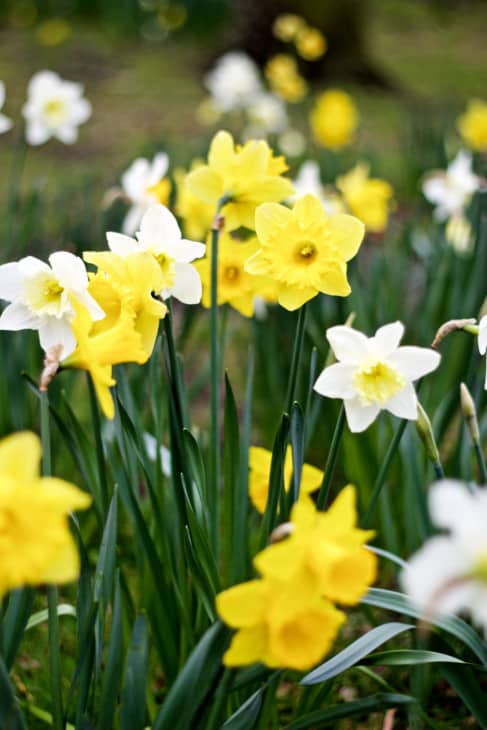
Daffodils are toxic perennial herbaceous plants native to Northern Europe. When consumed in large quantities, they can cause salivation, vomiting, diarrhea, nausea, convulsions, and trembling. Skin contact can result in dermatitis. Consuming the bulbs can result in low BP and cardiac arrhythmias. Daffodils or Tazettas bear showy, pink, white, orange, gold, or variegated scented blooms that are star-like or trumpet-shaped. They also have simple, deciduous, green, strap-shaped, waxy foliage.
2. Oleander (Nerium Oleander)
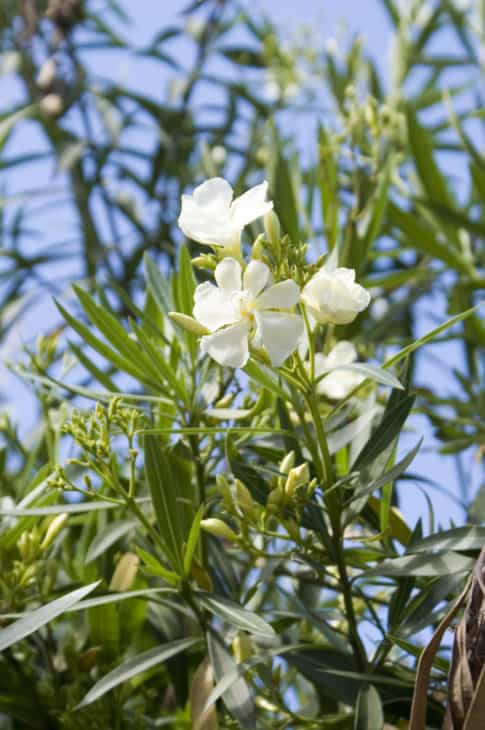
Oleander is an exceedingly dangerous plant found in the wild. Consumption of dry oleander leaves can be deadly if they comprise 0.005% of the body weight of an animal. According to recent investigations, nearly three leaves of oleander can be dangerous for crossbred heifers and horses. Researchers analyzed that the average dangerous dosage of the leaves of this plant is around 26 mg per kilogram of its body weight.
3. Poison Oak (Toxicodendron Diversilobum)
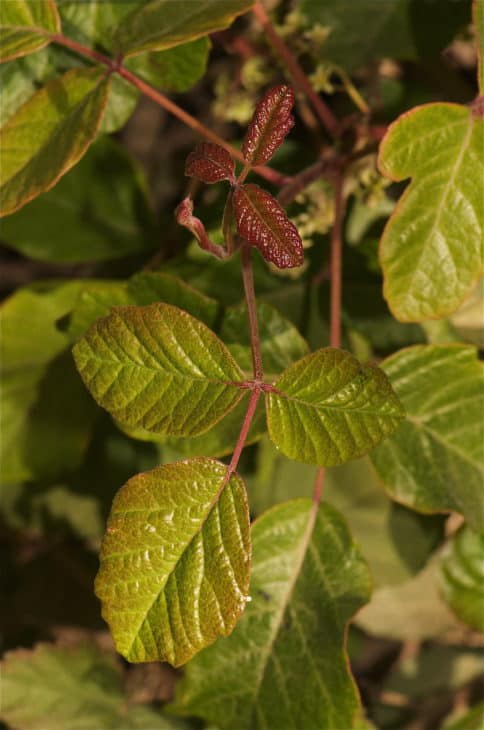
Poison oak can be mixed up with poison ivy if you don’t look too closely. It also looks like a bush at full growth. However, the leaves are the major difference in their appearance. Poison oak is known for having waxy berries on it. The colors of the berries also change with time, going yellow or green and to gray or white, respectively. The leaves are lobed and oak-like. In addition to that, the leaves are arranged alternately along the stems.
4. Poison Ivy (Toxicodendron Radicans)
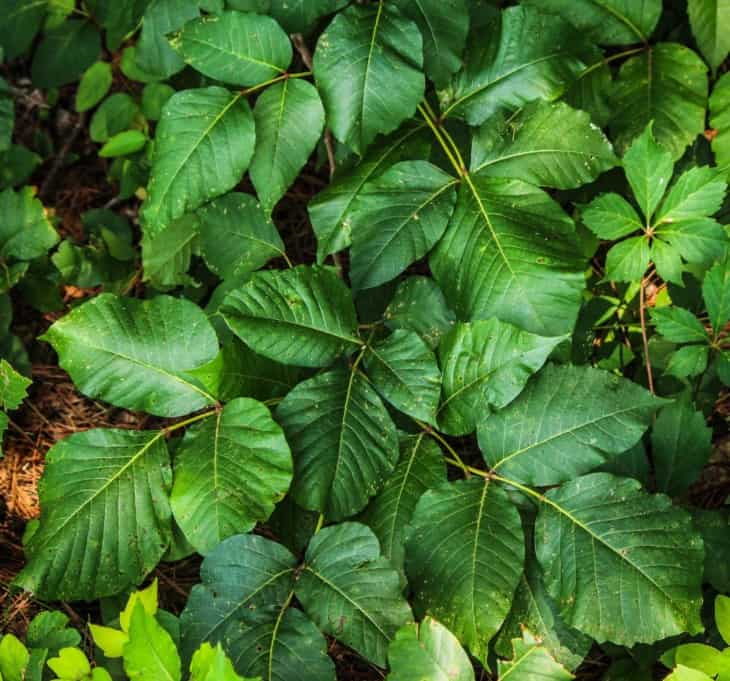
Poison ivy is an allergenic plant commonly found in Asia and East America. It has been known to cause contact dermatitis or a painful and itchy skin rash. This is caused by urushiol, a clear liquid found in its sap. The poison ivy is usually seen to grow with support as a climbing vine, along a trailing vine. Caution is advised to avoid accidental ingestion or contact of poison ivy with the eye as it can cause a severe reaction.
5. Poison Sumac (Toxicodendron Vernix)
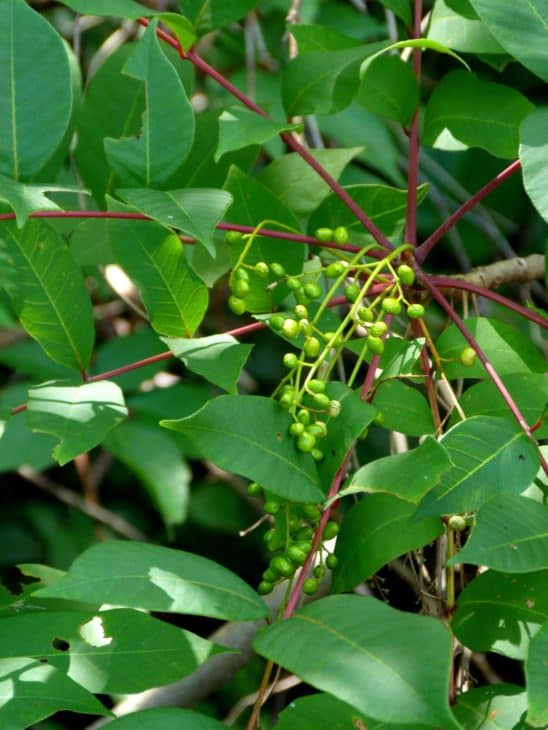
Poison sumac is considered even more allergenic than ivy and oak. Its oil is highly allergenic and can cause severe itching and burning reactions on the skin. Like poison ivy, sumac contains urushiol in its sap as well, but its chemical composition is more potent. When burnt, the plant releases smoke, which can be very toxic and harmful, causing pulmonary Edema and lung damage.
6. Belladonna Lily (Amaryllis belladonna)
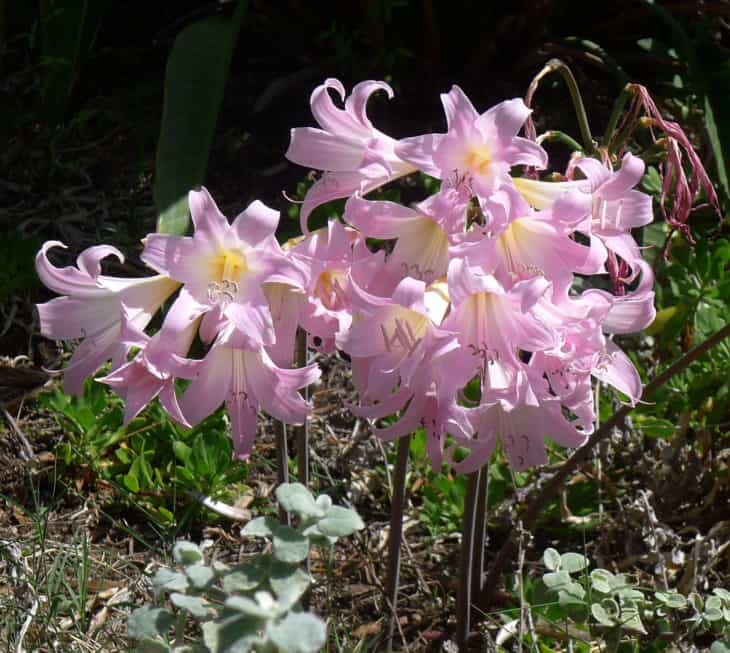
Belladonna Lily is a flowering bulb native to Africa. It grows showy clusters of fragrant pink or burgundy blossoms on its naked, green, and lavender-hued stems. The blooms are followed by leathery, deciduous, strap-like, dull green leaves. All parts of this plant contain poisonous alkaloids that can cause depression, abdominal pain, hypersalivation, vomiting, tremors, and anorexia in animals. The poison doesn’t affect humans severely.
7. Azaleas (Rhododendron)
Azaleas are deciduous plants grown as ornamentals worldwide due to their attractive flowers. Native to Europe, North America, and Asia, Azalea bushes contain toxins called grayanotoxins, which make them poisonous. Consuming this plant will result in excessive salivation and a burning sensation in the mouth. Azalea bushes bear funnel-shaped, scented blooms with five projecting stamens and two distinct lips.
8. Elephant’s Ear (Alocasia calidora)
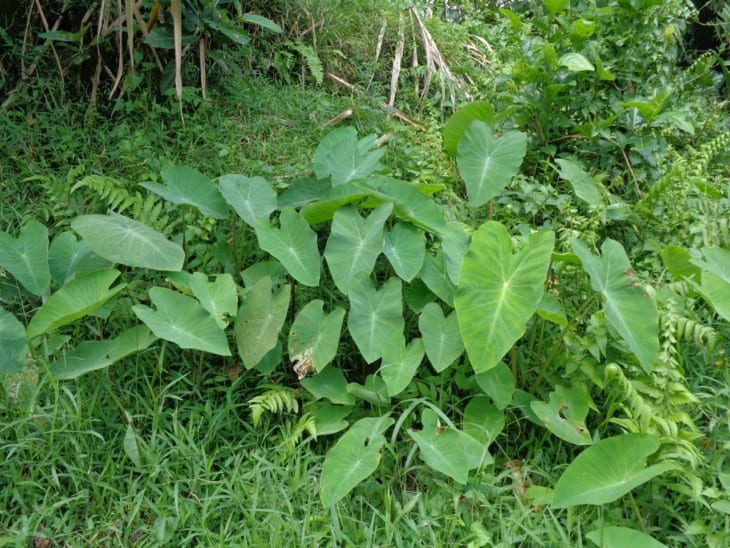
Elephant Ear is an upright, broadleaf, evergreen cultivar with large, striking, tropical-type, arrow-shaped, ribbed foliage. This plant grows in a vase shape and has spadix blooms. It is resistant to heat and humidity. Elephant’s Ear has poisonous leaves that contain insoluble calcium oxalates. Ingesting this plant can result in excessive drooling, pain, swelling of the lips, mouth, and tongue, vomiting, and difficulty swelling.
9. Irises (Iris)
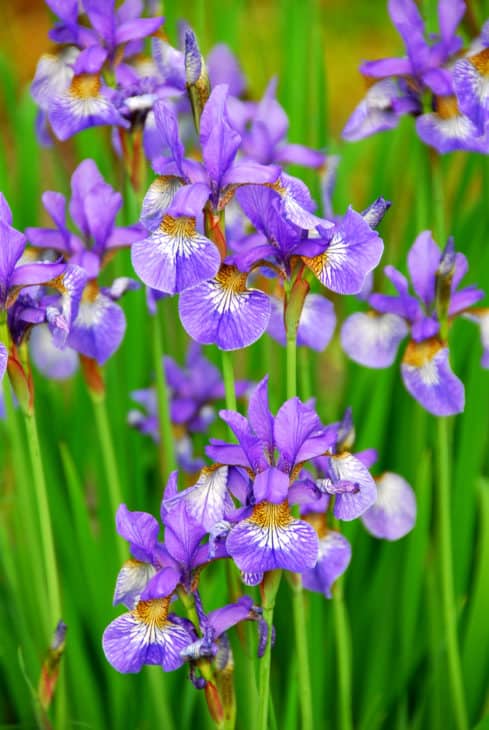
Iris is a genus of about 300 flowering plants that thrive in the Mediterranean, Central Asian regions, and North Temperate Zone. Irises are bulbous or rhizomatous plants with creeping, thick underground stems. Some Irises have short, conical stems, while others have robust, ringed, horizontal stems. Their flowers have three broad stigma branches, three sepals, and three petals. It is bulbs contain toxic compounds that cause diarrhea, nausea, vomiting, adnominal pain, and fever.
10. Lantana (Lantana Camara)
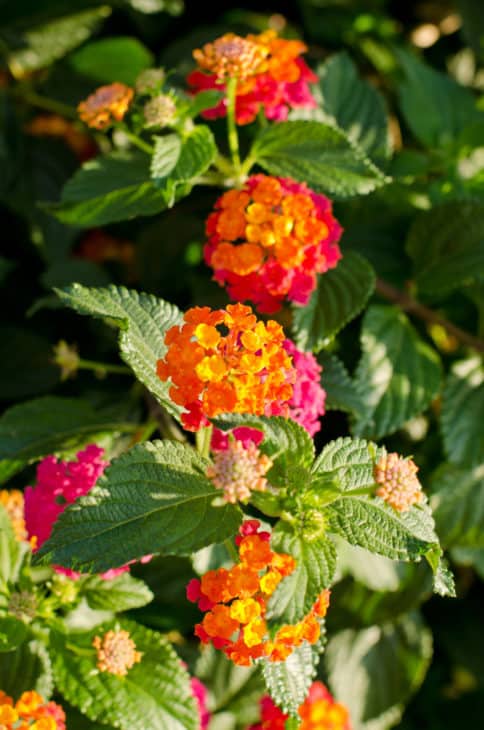
About 150 species of perennial flowering plants of the Verbenaceae family, Lantana, belong to Lantana’s genus. Native to the Americas and Africa tropics, they have been brought to several locales, including the Australian-Pacific region, where they have established a new home. This plant should be considered toxic to livestock. Several white and pink flowering types can be just as poisonous as the red ones. In most cases, lantana poisoning is caused by livestock that has never been exposed to the plant.
11. Milkweed (Asclepias)
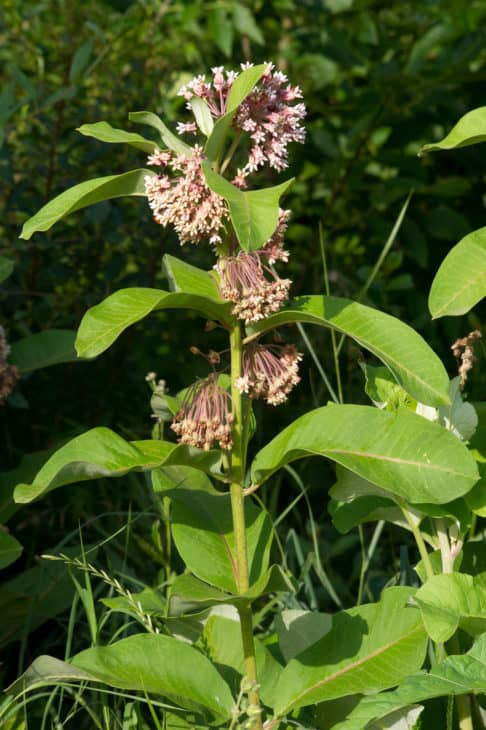
The milkweed (Asclepias) plant, also known as Showy Milkweed, is a perennial plant that’s known for its unique clusters of pinkish-white, sweet-smelling flowers that are shaped like stars. While the stars are an identifying factor, the name of the plant comes from a milky latex that is released when cells on the plant have been damaged. The leaves and other parts above the ground on this plant are poisonous.
12. Wisteria (Wisteria)
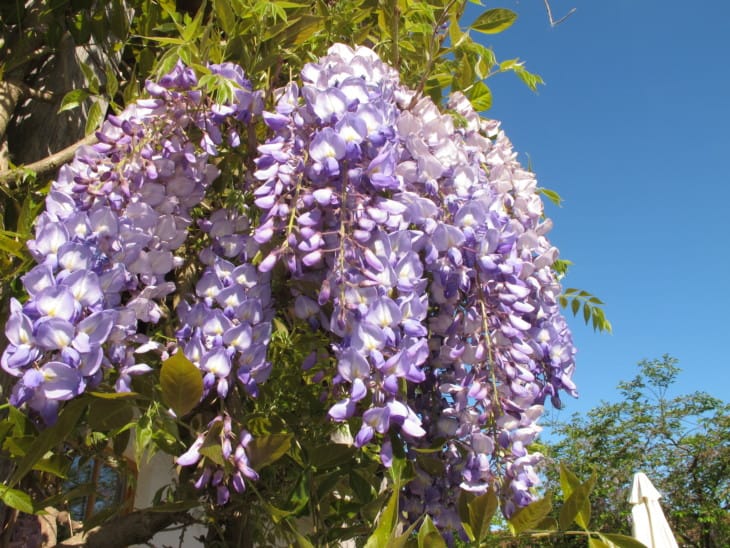
The wisteria is a beautiful flowering vine that has graced gardens for centuries. However, this vine is not without its dangers. All parts of the wisteria plant are poisonous, and ingestion can lead to stomach pain, vomiting, and diarrhea. In severe cases, it can even cause convulsions and respiratory paralysis. The wisteria’s toxicity is due to a class of compounds known as glycosides.
13. Angel’s Trumpet (Brugmansia)
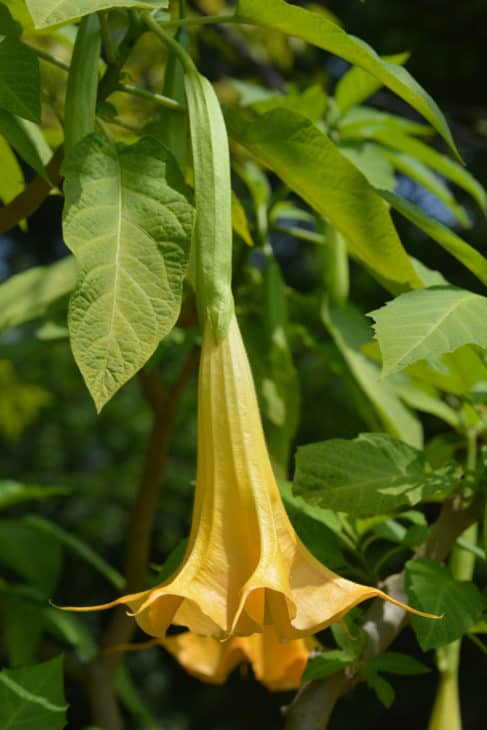
Angel’s Trumpet is part of the nightshade family of shrubs and small trees. This plant is evergreen, with an average height of about 26 feet. The leaves on this plant are toothed, arranged alternatively along the stems of the plant. It also has flowers that are shaped like trumpets, with various colors, including pink, red, orange, white, greenish, yellow, or cream.
14. Sago Palm (Cycas Revoluta)
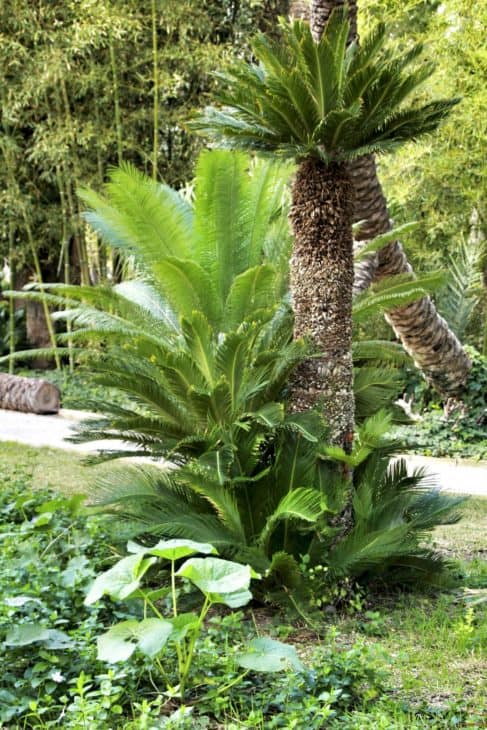
Sago Palm is a non-flowering Japanese and southern Chinese native. This dioecious plant produces nuts but does not flower. It features compound, large, dark green leaves that are considered palm leaves. They develop in a whorl on top of the trunk. This plant contains cytosine, a fast-acting liver toxin. Ingesting Sago Palm can cause diarrhea, loss of appetite, excessive drooling, vomiting, and eventual liver failure.
15. Japanese Yew (Taxus Cuspidata)
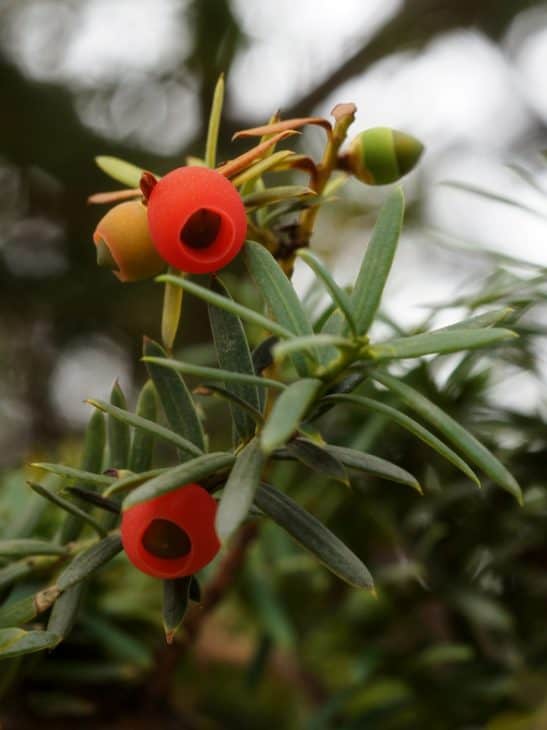
Japanese yew has bright yellow flowers and stunning red berries that make for festive holiday decorations, but the plant and its seeds are highly poisonous and must not be ingested. They are very dangerous for humans and all animals, and if ingested accidentally, the person must get immediate medical help as it contains a toxin called taxine A and B that causes heart failure.
16. Yellow Jessamine (Gelsemium Sempervirens)
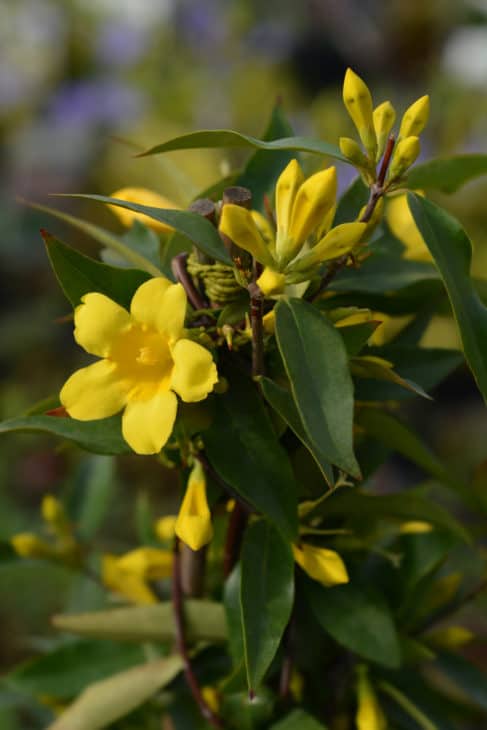
The tangled vine Gelsemium sempervirens is native to the subtropical and tropical regions of South and Central America and the southeastern and south-central regions of the United States. The entire plant is highly toxic. Even a tiny amount can be deadly. Visual issues, trouble swallowing, headaches, and dizziness are only some of the poisoning symptoms. Other symptoms include breathing difficulties and seizures.
17. Eastern Black Nightshade (Solanum Ptycanthum)
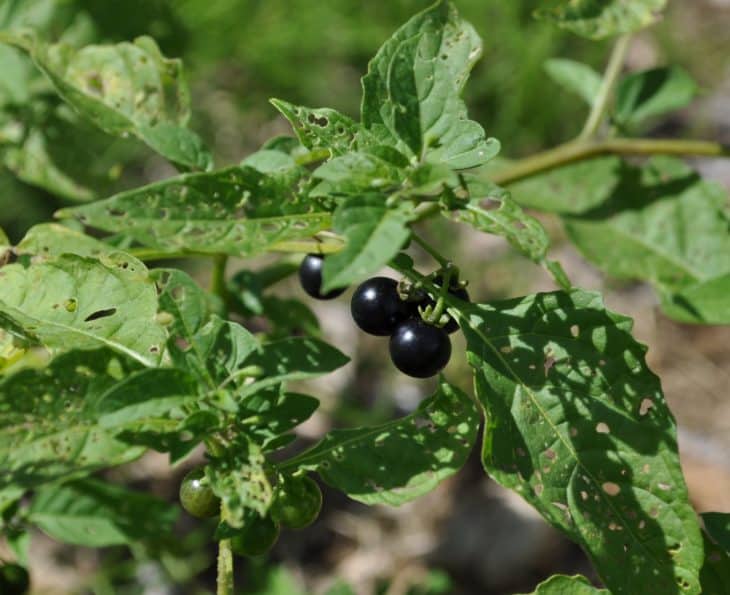
Consumption of the deadly nightshade, in any form, is highly harmful to your health. As stated by the Missouri Botanical Garden, merely touching the plant may be hazardous if the skin is injured. However, if you must handle the plant, it is recommended that gloves must be worn. Unripe berries and leaves of the black nightshade plant are potentially harmful. Solanine, a poisonous toxin, is found in this plant. Lower amounts might lead to adverse effects, including nausea and vomiting.
18. Alfalfa (Medicago Sativa)
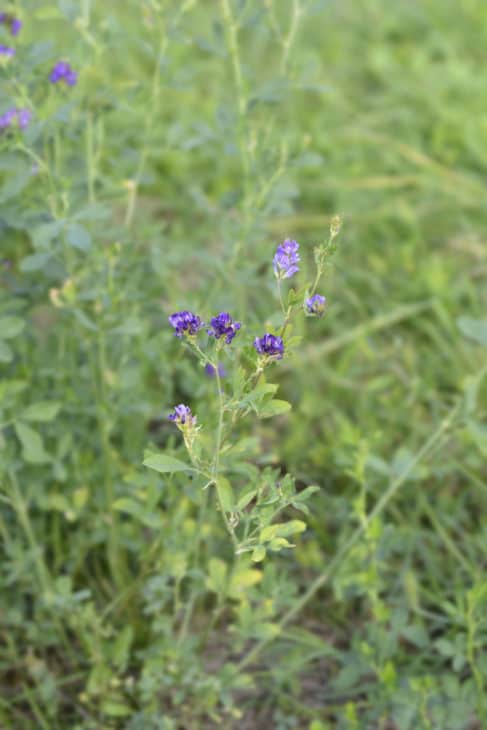
Toxic to its seedlings, Alfalfa autotoxicity is a genetic characteristic seen in alfalfa. Unfortunately, there’s yet no way to determine what causes this problem. This plant has the potential to harm its seedlings by preventing them from germinating or growing correctly. However, other crops are unaffected by alfalfa autotoxins. The establishment and development of fresh alfalfa plants are hampered by toxins produced by old alfalfa plants (medicarpin).
19. Bloodroot (Sanguinaria Canadensis)
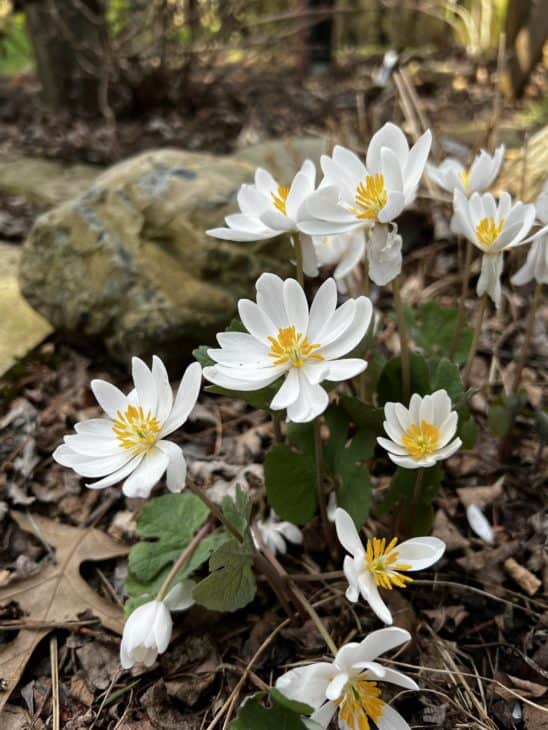
Bloodroot is a perennial flowering plant that’s usually found in early spring. It has attractive white flowers, and you can find this plant on sunny slopes or woodlands. The root of this plant is the most toxic part because it has a bitter, red sap that may even lead to cardiac paralysis if ingested. Moreover, the plant’s juice can irritate the eyes and skin.
20. Bouncing Bet/Wild Sweet William (Saponaria Officinalis)
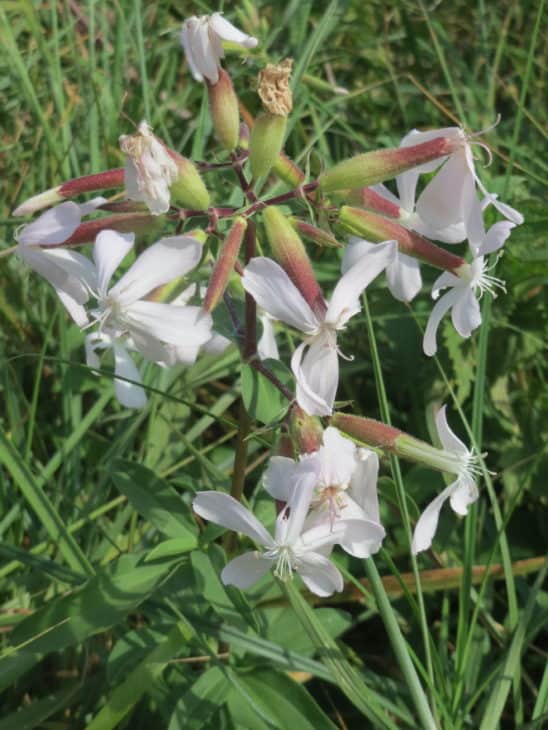
The saponin found in bouncing bet’s leaves, stems, roots, and seeds is unquestionably the plant’s primary source of the toxin. Inflammation of the digestive tract occurs as a result of the poison. Bet bouncing along the highway and in other wastelands is readily available to animals that are let to graze there. While all plant parts are deadly, the seeds have the highest toxins.
21. Bracken Fern (Pteridium Esculentum)
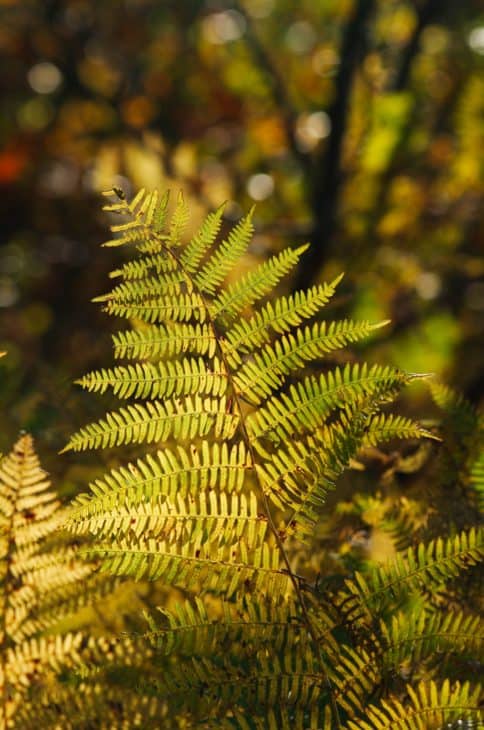
There are several species of bracken in the genus, but Pteridium esculentum, better known as bracken or Austral bracken, is among them. It is endemic to several regions in the Southern Hemisphere. However, there is a problem with bracken: It is edible, but it is also very poisonous, especially the fiddleheads, and has caused farmers’ stomachs to hurt for ages.
22. Buttercup (Ranunculus)
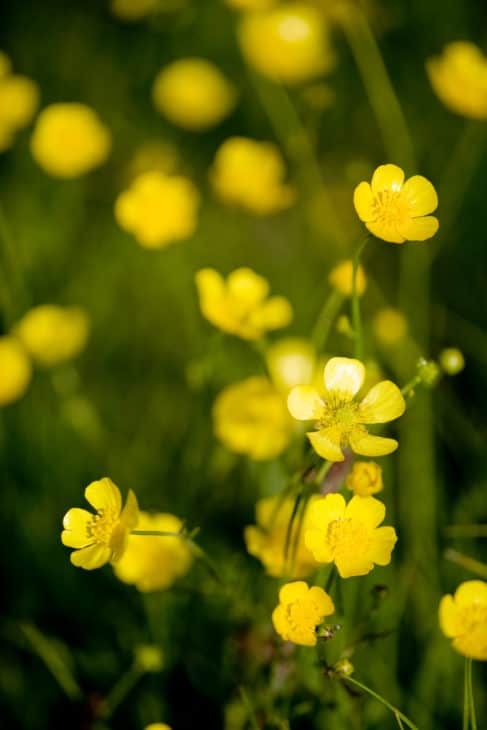
The leaves of the plant buttercups (ranunculus) are complex, with three strongly lobed leaflets, and have smooth stems and yellow flowers. It is important to note that while dried buttercup may not be harmful, the leaves of this plant are known to be exceedingly poisonous, and swallowing even a small amount will likely result in diarrhea, nervous twitching, and seizures.
23. Crown of Thorns (Euphorbia Milii)
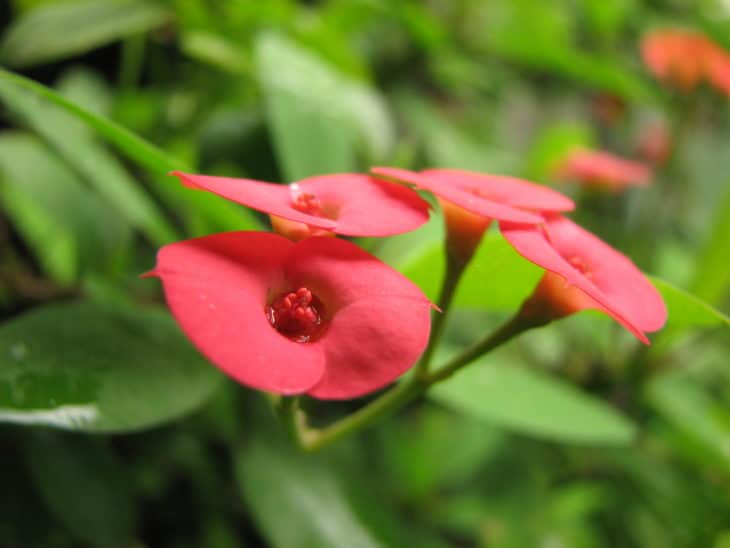
Also known as Christ Thorn, Crown of Thorns is a thorny plant native to Madagascar. It’s grown in warm climates as a garden shrub. This hardy perennial features stout gray thorns, oval leaves that drop with age, and red flower bracts. It grows branching, sprawling, vine-like stems and small, inconspicuous blooms that grow in paired clusters and surround showy, light red bracts. Crown of Thorns has milky white sap that is poisonous and can cause eye and skin irritation.
24. Dutchman’s Breeches (Dicentra Cucullaria)
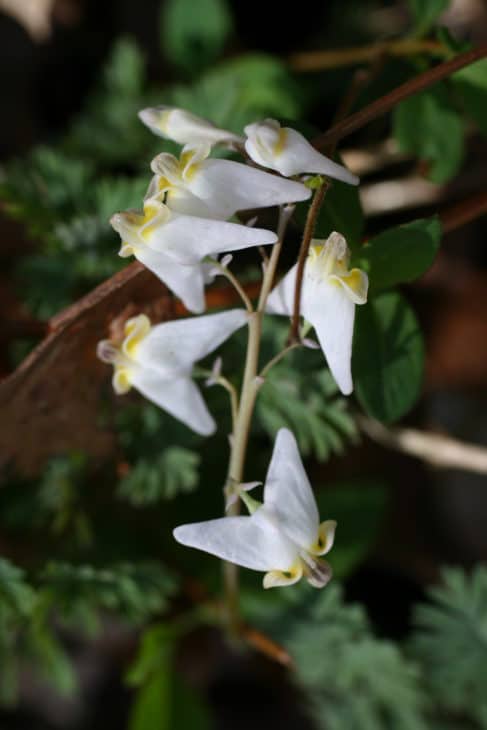
Dutchman’s breeches, like its related squirrel corn, produce the neurotoxic alkaloid isoquinoline, making all sections of the plant dangerous to cats, cattle, and people. An animal’s shaking, wobbling, nausea, vomiting, and difficulty breathing are all symptoms of tuberculosis caused by the underground tubers. Even the slightest skin contact with Dutchman’s breeches can cause temporary redness and itchiness in the affected area.

